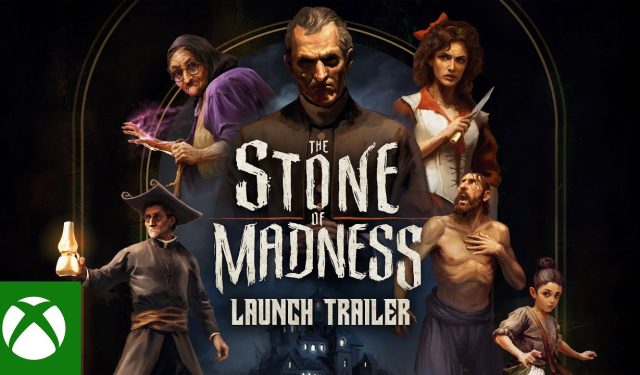Introduction
The Stone of Madness, the latest offering from the acclaimed team behind the Blasphemous series, invites players to explore the dark and immersive world of an 18th-century Spanish Monastery. This real-time tactical stealth game, released on Xbox Series X|S, immerses players in a narrative of cruelty, madness, and psychological despair set against a backdrop steeped in history and eerie aesthetics. In this article, we’ll dive deep into the game’s key elements, its gameplay mechanics, and what sets it apart in the current gaming landscape.
Exploring the Dark Aesthetic of the Monastery
The Stone of Madness is set in a timeworn Jesuit monastery tucked away in the rugged Pyrenees mountains. This setting enhances the game’s somber theme, establishing a sense of isolation and foreboding that resonates throughout the gameplay experience. The architectural details and atmospheric design are crafted to evoke a sense of history, illustrated through shadowy halls and decaying structures that tell a story of their own. The use of light and shadow amplifies this dark aesthetic, creating a captivating environment that bewitches players while also challenging them to navigate its dangers.
Within this monastery lies a duality of torment and resilience, embodied by the five unique prisoners. Each character brings forth different skills and attributes, allowing for strategic cooperative gameplay that hinges on synergies among the characters. As players delve deeper into the depths of the monastery’s madness, they will need to uncover each character’s backstory and capabilities—blending stealth mechanics with narrative elements that engage players on multiple fronts.
Gameplay Mechanics: Tactical Stealth Meets Psychological Horror
At its core, The Stone of Madness offers a blend of real-time tactical gameplay with stealth mechanics. Players must collaborate with the five prisoners, utilizing their individual strengths to tackle the myriad of challenges that arise in the monastery. This approach to gameplay encourages players to think critically and adapt their strategies on-the-fly as they face increasingly difficult obstacles and enemies. The cooperative elements of the game highlight the importance of teamwork, allowing players to create their strategies while keeping the ultimate goal of escaping the madhouse in mind.
Incorporating themes of mental health, the game offers a unique journey through the psychological struggles of its characters. Players must not only confront external threats but also navigate the inner turmoil of the protagonists, making decisions that impact their sanity and wellbeing. This nuanced incorporation of psychological horror sets The Stone of Madness apart from traditional stealth games, creating a memorable experience that encourages deeper reflection on the human condition.
Cultural Relevance and Final Thoughts
The Stone of Madness weaves together elements of history, psychology, and cultural commentary in a way that resonates with contemporary themes surrounding mental health and societal issues. Gaming has increasingly become a platform for storytelling that fosters dialogue about such topics, and this game is no exception. Its setting during a time of inquisitions and oppression analogizes the struggles faced by individuals in modern society, offering a narrative with broader implications beyond entertainment.
As players engage with the harrowing stories of the prisoners, The Stone of Madness invites contemplation on humanity’s capacity for resilience in the face of despair. The game not only serves as an engaging form of entertainment but also as a poignant narrative vessel that prompts players to question and reflect. With the game now available for Xbox Series X|S, it stands as a compelling addition to the gaming landscape, beckoning players to experience the intertwining depths of strategy, stealth, and human experience.
Conclusion
The Stone of Madness represents a significant step forward in the realm of storytelling within video games, delivering a powerful narrative underpinned by tactical gameplay. As we witness a growing trend for games to address social and psychological themes, The Stone of Madness opens up a dialogue about the complexities of the human mind within the immersive medium of interactive entertainment. What will you uncover in the shadows of the monastery, and how will you shape the lives of its prisoners?
https://www.youtube.com/watch?v=B5saRa_xWuk


